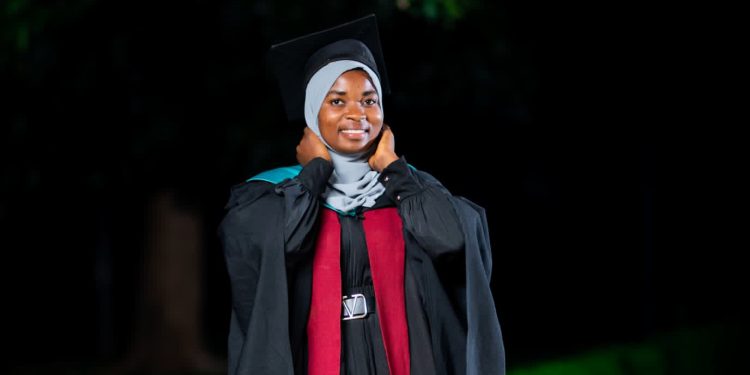This is a satire written to mimic articles, reports and stories generally written about Muslim women by women from Western non-Muslim backgrounds. It is, to some extent, an attempt to convey to the readers how it feels to be ‘othered’ and to be judged superficially in accordance with only one’s own perceptions. I hope you take it for what it is – a satire.
I do not clearly remember the first time I was here. My earliest memories of Australia start when I was around six or seven, probably my first trip after I was born in the city of Sydney. My parents were not particularly happy with the idea of me growing up there. So, they took me out to Iran at the first opportunity.
As I grew up, my impressions of Sydney were formed from stories I heard from my parents, shows I watched on television and of course, what I saw on my trips. From my first trip at the age of seven, I vaguely remembetralian females liked to attract as much attention as they could to themselves, by hiding behind their make-up. They made their kohl in liquids and pencils, instead of pots like we do, and sold them in stores under a range of different names and prices. They all seemed the same to me, though. Anyhow, I bought what they told me to buy and used what they told me to use, from lipsticks to abdominizers, changing my body from head to toe to please their male gods. Such things ensured that everyone wanted to ‘hang out’ with me (a term denoting something to the effect of spending time and/or social acceptance).
In the five years between then and now, I had convinced myself that Australia would have joined other countries on the road to progress. But my return to Sydney both shocks and saddens me. While many parts of the world have seen development, Australia has dragged behind, especially with regards to the status of women. It seems as if it has only succeeded in digging itself deeper into a botter body. Since the fundamentalist regime insists that it must be available for display in a certain manner, she must follow these rules.
The rules are based on the Australian Holy Scriptures, two of which are Dolly and Cosmopolitan. Also known as magazines, these contain the teachings of hard-liner editors and reporters/writers who design the way in which society must view women and the way women must dress and act. Since the advent of these magazines, there have been mass conversions in the country to the faith they preach. Authority and control have been transferred onto them and they play a vital role in the life of women. They have institutionalized radical guidelines such as the 36:24:36 measurement of a woman’s body. Furthermore, they propagate intolerance and hate to be internalized in all women – hate for their own bodies, natural intelligence, privacy and inherent dignity. These women are brainwashed into believing that their Creator is to blame for their deficiencies in not automaimize themselves. They need the perfect curl, the right bounce and the shiniest color. Their value to society is directly linked to their hair.
Other significant practices are the prevalent marriage customs. A woman is required to perform the ceremonial ‘going out’, which can span any period of time from a day to ten years. This starts as early as primary school and as she grows up, she goes out with various men. Until she finds the one she wishes to marry, she does not commit to any one man.
All the men she goes out with are allowed to touch her and sleep with her. All this time, her status and acceptance in society is determined by how many of these men she has accommodated in her life. The greater the quota of men, the more sufficient she is considered. Particularly in high school, young girls have little to contribute to their own identities. Their identities derive from who they go out with and how many boys they go out with. Though this kind of mental torture is les Inequalities also exist for women who do get married. Marriage requires the woman to play multiple roles. She must be wife, mother and often a breadwinner of the family. She shoulders the responsibility of taking care of her husband and children at home while also earning money not only for herself, but also for the family. Whatever she earns is not solely her property. Unlike Islamic societies, her husband and her family have a claim to her income and she even pays for groceries!
Often, she is not given the choice of whether she wants to stay at home or work. The society she lives in enshrines materialism and money, money and more money. It is vital to their lifestyle. As a result, she must go out and work. On top of that, her position in society is judged on her ability to work outside the home. She must suffer the greatest burden in society. She really does not have the right to choose. Can you imagine a life where your identity is judged by everything you have and not everything yoke to do not have that alternative. They do not even know of their plight. They are pushed into a corner where they cannot see outside the boundaries of such a fundamentally Western society. Women immune to Western correctness – mostly the educated Muslims – have begun programs to educate others around them. They are asserting themselves by breaking out of the confinement, wearing loose clothing and denying just anyone access to their sexuality. I see their efforts as a glimmer of hope. It is crucial that before women can improve their lot, they are taught the rights they have that society has taken away from them.
Nevertheless, there is still hope. I call upon all the Muslim women in the world to come to the rescue of Australian women. I urge that all of us stand up against Western oppression in different parts of the world. It is our responsibility to bring progress into these societies and it is up to us to save them.
SOURCE: http://allaahuakbar.com



















